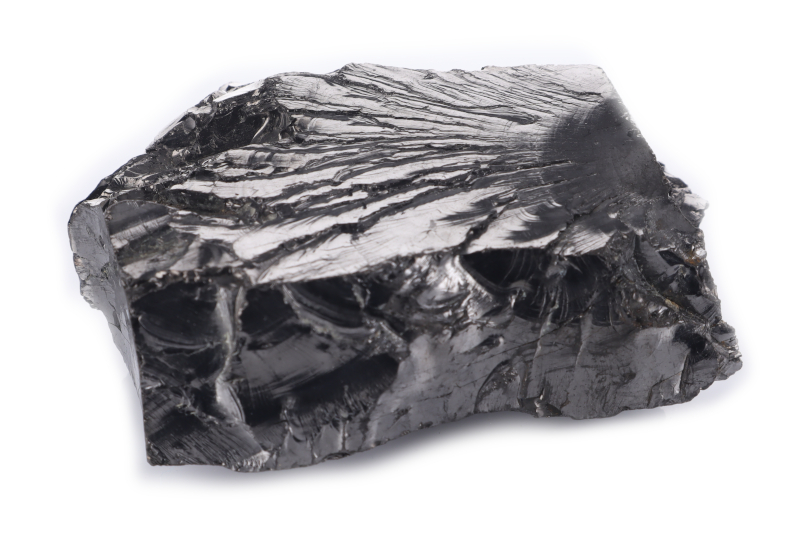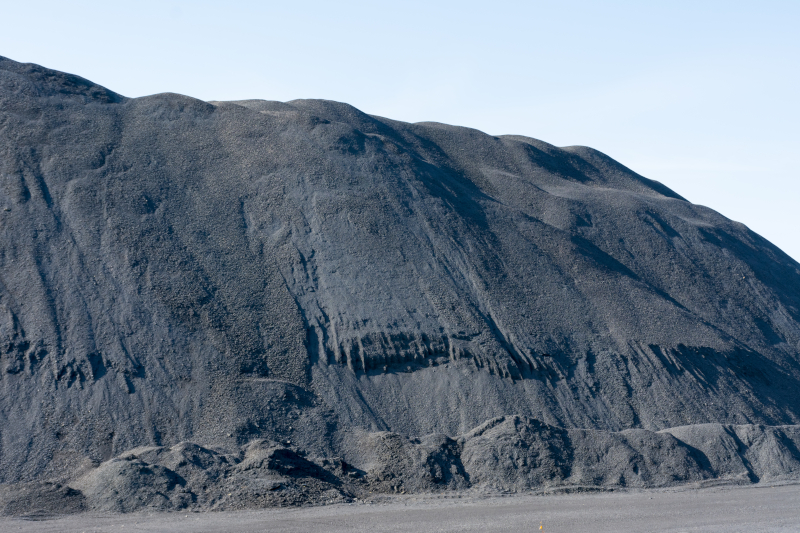Scientific Papers
The structure and composition of natural carbonaceous fullerene containing mineral Shungite
Oleg Mosin
Moscow State University of Applied Biotechnology, Moscow 119554, Russia
Ignat Ignatov
Scientific Research Center of Medical Biophysics, Sofia 1111, Bulgaria
The review of this article
Researchers studied the composition and structural properties of amorphous, fullerene analogous carbon-containing shungite mineral from the Zazhoginskoe deposit in Karelia (Russian Federation). In this report, there is submitted information about the nanostructure, obtained using composition, scanning electron microscopy, and chemical-physical characteristics of this mineral. There’s also a demonstration prospect of using shungite natural mineral possessing high absorption, bacterial and catalytic activity, as an adsorbent for water purification and treatment.
Introduction
Shungite is a natural mineral sorbent, an intermediate form between the amorphous carbon and the graphite containing 20% silicate mica, 30% carbon, and 45% silica. Schungite carbon is a fossil organic material found at the sea bottom of the Precambrian deposits and consists of a high level of carbon and fullerene-like structures.
Initially, the shungite mineral acted as a substitute and a filler of fuel in the blast furnace production of iron, in ferroalloys melting, and in the manufacture of non-stick, heat-resistant coatings and paints. But, currently, the mineral has some other properties such as bactericidal, catalytic, reduction-oxidation, absorptional, and the ability to screen off radio radiations and electromagnetic. As a result, the mineral has a lot of uses in many industries, branches of science, and technology for the manufacturing of nanotechnological material materials with nano-molecular shape. These properties of the mineral have helped in the creation of new fillers and conductive paints for plastic materials, composite materials, carbon black, and rubber substitutes among others.
Because of having catalytic, absorptional, and reduction-oxidation property, shungite is mainly vital in water purification and treatment such as sewage in the treatment of sewage waters from both organic and inorganic substances. The mineral has greatly helped in dealing with bacteria and other biological activities.
A variety of properties and unique structure of shungite defines the search for new locations of industrial application of this natural mineral in both science and technology which contributes to a clear understanding of its structure using modern analytical techniques. This report deals with investigating and evaluating the structure, and composition of shungite mineral.
Materials
The experiment was performed using samples of shungite mineral obtained from Zazhoginsky sediments. Samples were then taken and analyzed in solid form as directed by The National standard of the Russian Federal Agency of Technical Regulation and Metrology. Samples were placed into 100cm3 hermetically sealed glass tubes after being washed and dried in a crucible furnace and homogenized in a homogenizer through mechanical grinding. The microwave helped in the decomposition of the shungite samples. Other methods used in sample preparation were drying, washing with distilled water, and pulverisette 16(Fritsch GMBH, Germany).
Analytical methods
The analytical methods got certified by the Institute of Geology of Ore Deposits. Mineralogy, Petrography, and Geochemistry which is the Russian Academy of Sciences. The collected samples were treated using GC, SEM, ICP-OES, and TEM techniques.
Inductively coupled plasma optical emission spectrometry(ICP-OES)
In this method, the mineral composition was studied using ICP-OES on Agilent 710-OES spectrometer with plasma atomizer, 40 MHz free-running air-cooled RF generator, Mega; Pixel CCD detector, and a computer-optimized system. The power output was 700-1500W in 50W increments while 1676-785nm spectral range.
Gas chromatography
The method was performed at the Main Testing Centre of Drinking Water on Kristall 4000 LUX using Inerton-DMCS columns of stationary phases of 5% OV-17 and 5% SE-30 having FID and using Helium as a carrier gas.
The total amount of carbon found in the mineral was measured using the elemental analyzer CHS-580 which has an IR detector and an electric furnace. The 200mg solid sample was subjected to combustion at the temperature of 1500.
Scan and transmission electron microscopy
The structural studies of the mineral were carried out using TEM and SEM techniques. SEM has a tungsten electron gun, a termolecular pump, and pressure.
Results and Discussion
Composition and structural properties of shungite
According to the results, shungite is a metastable allotropic form of carbon having high carbonization. Also, apart from carbon, other compounds were found from the shungite and they include SiO2-57%, Al2O3-4%, FeO-0.6%, TiO2-0.2%, MgO-1.2%, Fe2O3-1.49%, MnO-0.15%, S-1.2%, and K2O-1.5%. The compounds obtained after thermal decomposition of the shungite mineral at a temperature of 1200-1400 were found to be in smaller amounts, and they include B-0.004%, V-0.015%, Ni-0.0085%, Cu–0.0037%, Co-0.00014%, Mo-0.0031%, Zn-0.0067%, and As-0.00035%.
Physical and chemical properties of shungite
Density-2.1-2.4g/cm3
Compressive strength-1000-1200kgf/cm2
Thermal conductivity coefficient-3.8W/m K
Porosity-up to 5%
Adsorption capacity-20g/m2
Shungite mineral with silicate is divided into low carbon,-5%, medium-5-25%, and high carbon-25-80%.
The crushed crystals of shungite have bipolar properties hence high adhesion, and faster mixing of both organic and inorganic substances.
The mineral has a broad spectrum of bactericidal properties.
Carbonaceous matter of shungite having a marked anisotropy shows a significant increase in diamagnetism at low temperature, a feature for fullerites. The mineral has a hollow carbon fullerene-like multilayer spherical having smoothly curved carbon layers that cove nanopores.
The discovery of fullerenes in shungite, graphite, and carbon was through the laser irradiation process. In coal, its arrangement was at vertices of regular hexagons and pentagons, while it covered the surface of the graphite-forming an ellipsoid hence making up the closed polyhedra consisting of 3 coordinated even number of carbon atoms in sp2 hybridization state. In the carbonaceous material of shungite, there’s the presence of fullerenes and fullerene-like structures.
Fullerenes are the most excellent fillers and absorbents because of having reticulated- spherical structure and their synthetic derivatives. They are highly electronegative hence act as potent oxidizing agents.
Use of shungite in water treatment technologies
The mechanism of interaction of shungite mineral with water involves the mineral absorbing oxygen and interact with it as an active oxidizing agent in both water and air. In this process, there’s a production of atomic oxygen which acts as an active oxidizing agent hence oxidizes adsorbed found on the shungite mineral producing water and CO2. As a result, it frees the surface of the crystal allowing it to prepare for new adsorption. Extreme exposure of shungite mineral with respect to the dissolved cations such as calcium and magnesium is because metals are always transferred through the catalytic process by the crystal into insoluble carbonates.
According to the data obtained, on the absorption capacity of the mineral, it was discovered that shungite loses its effectiveness before the highly activated carbon begins to filter in the first stage of filtration. But, within 24hours, the natural shungite starts to purify water at a very high but constant rate because of its catalytic characteristic.
Also, shungite can remove free radicals from water 30 times more than activated carbon. Hence reduces the effect that might have caused by chlorine and its derivatives to human health. Besides, it’s capable of purifying sewage water by adsorbing on the surface of the contaminants hence removing colour and turbidity. As a result, it provides water with high organoleptic qualities and filling it with both macro and microelements.
Furthermore, the bactericidal property of the mineral helps in fighting against pathogens present in water; thus, used in water purification and treatment technologies.
Conclusion
From the researched data, fullerene containing natural shungite mineral has a significant practical application in a variety of industries as well as branches of science. Also, it can act as a substitute for carbon soot especially during the production of composition and construction materials, fillers, paints, and rubber. Fullerenes found in shungite mineral can also act as an alternative to the highly activated carbon during water treatment. The effectiveness of using shungite is due to its unique properties such as catalytic, adsorption, regenerative, and antibacterial, healthy to the environment with low cost of manufactured materials, and the existence of large domestic raw material site of the mineral deposit. All these features are a more significant contribution to further the expounding of shungite mineral and a lot of materials basing on them.
Reference
View full-text https://rspublication.com/ijst/dec13/2.pdf






